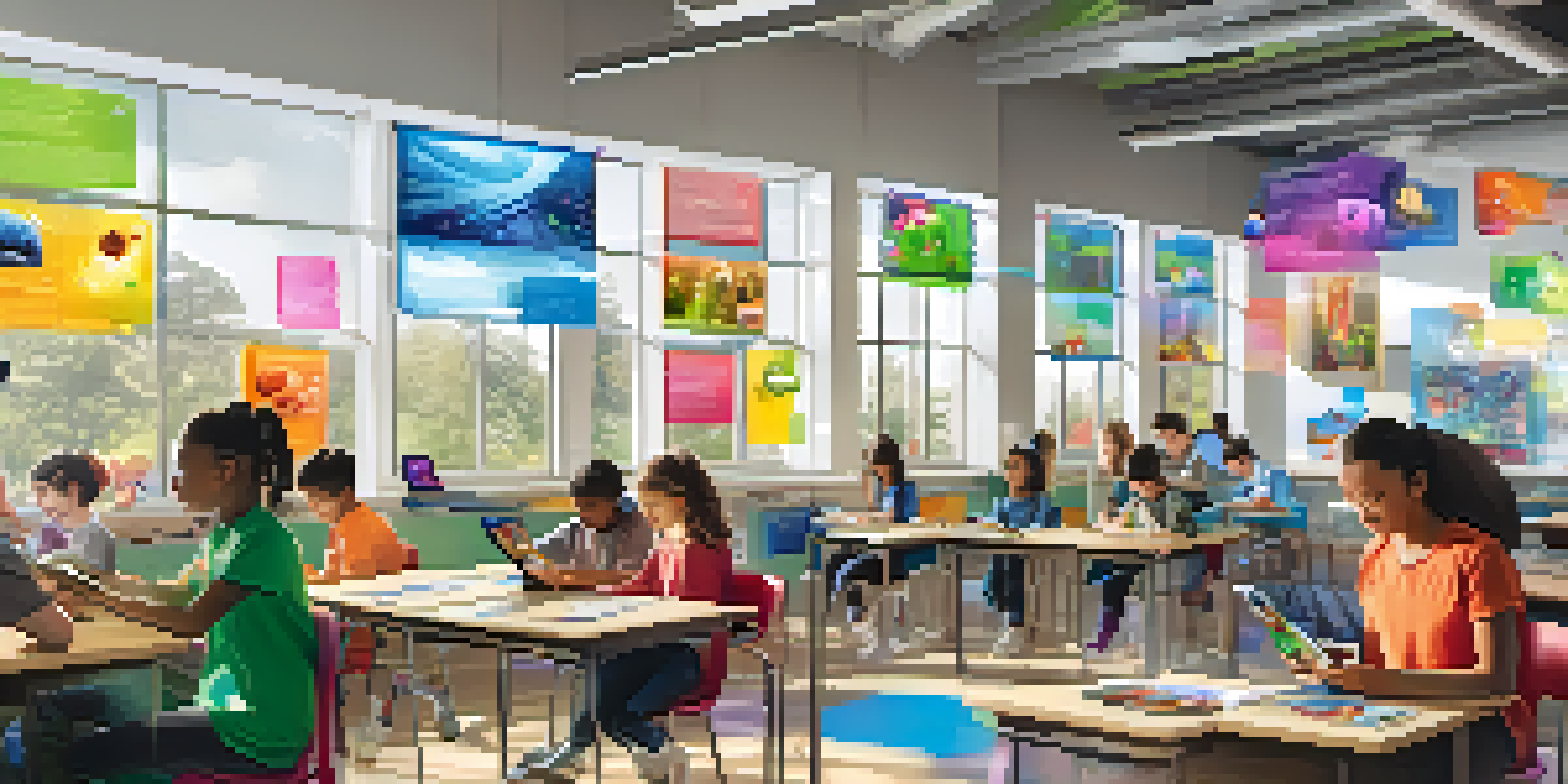The Impact of AR on Student-Centered Learning Approaches

Understanding Student-Centered Learning Approaches
Student-centered learning shifts the focus from the teacher to the students, allowing learners to take an active role in their education. This approach emphasizes collaboration, critical thinking, and real-world application of knowledge. By fostering an environment where students can explore their interests, they become more engaged and motivated in their learning journey.
What is Augmented Reality (AR) in Education?
Augmented reality (AR) blends digital content with the real world, offering interactive experiences that enhance traditional learning methods. Imagine a biology class where students can visualize a 3D model of a cell right on their desks! This immersive technology helps to bridge the gap between theoretical concepts and practical understanding, making lessons more relatable.
AR Enhances Student Engagement
Augmented reality creates interactive experiences that capture students' attention and make learning more relatable.
How AR Facilitates Engaged Learning
AR engages students by creating interactive and immersive experiences that capture their attention. For instance, when learning about historical events, students can use AR to explore ancient ruins as if they were there in person. This hands-on approach not only boosts engagement but also helps students retain information more effectively.
Promoting Collaboration Through AR Tools
One of the remarkable benefits of AR is its potential to promote collaboration among students. With AR applications, students can work together on projects, sharing insights and ideas in real time. This fosters a sense of community and teamwork, essential skills for success in both academic and professional settings.
Collaboration Boosted by AR Tools
AR applications foster teamwork and community among students as they collaborate on projects in real time.
Enhancing Critical Thinking with AR Experiences
AR challenges students to think critically as they interact with digital overlays on real-world objects. For example, while studying physics, students can visualize complex forces acting on structures. This not only deepens their understanding but also encourages problem-solving skills as they analyze and interpret data.
AR and Personalized Learning Paths
Another significant advantage of AR is its ability to cater to individual learning styles. Students can progress at their own pace, using AR to explore topics that interest them in greater depth. This personalized approach ensures that each student can engage with the material in a way that resonates with them.
Personalized Learning with AR
AR accommodates individual learning styles, allowing students to explore topics at their own pace and depth.
Challenges of Integrating AR in Education
Despite its benefits, integrating AR into education does come with challenges. Schools may face budget constraints or lack the necessary technical infrastructure to implement AR solutions effectively. Additionally, educators need proper training to maximize the potential of these tools, which can take time and resources.
The Future of AR in Student-Centered Learning
As technology continues to evolve, the future of AR in education looks promising. With advancements in AR applications, we can expect even more immersive and user-friendly experiences that enhance student-centered learning. By embracing this technology, educators can create dynamic learning environments that empower students to explore, collaborate, and thrive.